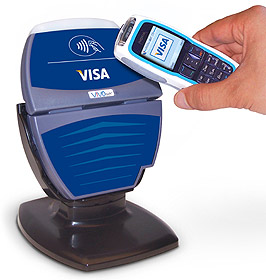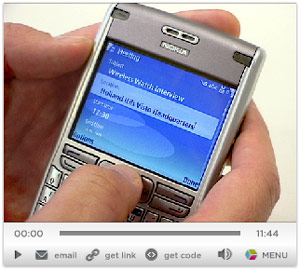 A group of major m-commerce companies announced a large-scale U.S. trial last week to include contactless payment, mobile content and premium arena services at Philips Arena in Atlanta, Georgia. The companies claim the trial will be the first large-scale test of next-generation mobile-phone applications in North America. The grouping includes Chase, Cingular Wireless, Nokia, Philips, Visa USA and others. The contactless payment functionality will be based on Near Field Communication (NFC) technology first developed by Sony and Philips. Other NFC trials are underway in Germany and France.
A group of major m-commerce companies announced a large-scale U.S. trial last week to include contactless payment, mobile content and premium arena services at Philips Arena in Atlanta, Georgia. The companies claim the trial will be the first large-scale test of next-generation mobile-phone applications in North America. The grouping includes Chase, Cingular Wireless, Nokia, Philips, Visa USA and others. The contactless payment functionality will be based on Near Field Communication (NFC) technology first developed by Sony and Philips. Other NFC trials are underway in Germany and France.
Wireless Watchers will know that the Sony/Philips NFC technology is also powering the super-successful “FeliCa”-branded mobile contactless payment services in Japan and has been adopted by NTT DoCoMo, KDDI and Vodafone as the de facto market standard for m-commerce, e-wallets, transportation and other peer-to-peer data transfer services. Sony first deployed NFC on the Octopus card in Hong Kong in 1997 and rolled their mobile handset trial ran in Japan in December 2003 — see WWJ video here. Today, over 7 million FeliCa-enabled phones have already been sold by DoCoMo alone.
One might think the two-year jump on deployment and commercial experience, not to mention brand equity, in Japan would motivate Sony to transplant an obvious success story from Tokyo to markets elsewhere. Instead, it looks like the wheel is being reinvented all over again.


 We published 596 articles on Wireless Watch Japan in 2005 and thought you might enjoy looking back at the most popular Japan mobile industry highlights from the year. The links below, three from each month, represent the two top stories (by volume of visitor requests) and a third which we consider a significant development in that 30-day period.
We published 596 articles on Wireless Watch Japan in 2005 and thought you might enjoy looking back at the most popular Japan mobile industry highlights from the year. The links below, three from each month, represent the two top stories (by volume of visitor requests) and a third which we consider a significant development in that 30-day period. A group of major m-commerce companies
A group of major m-commerce companies  Yesterday, Vodafone Japan announced
Yesterday, Vodafone Japan announced